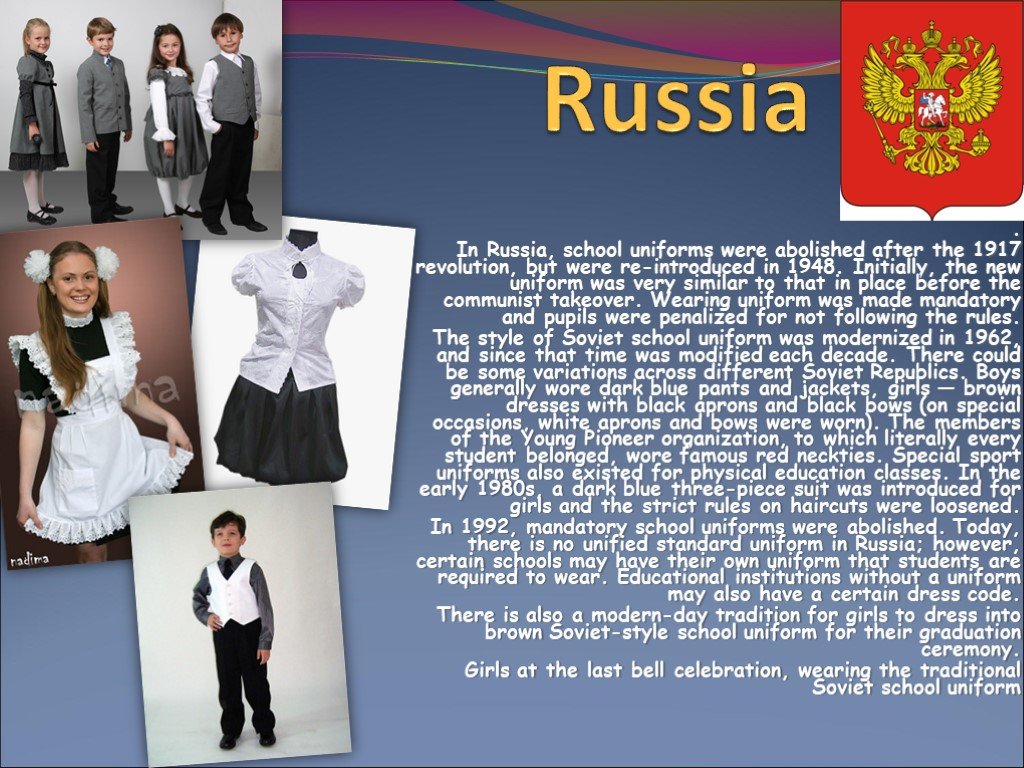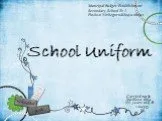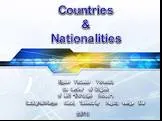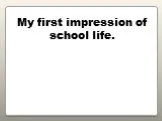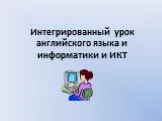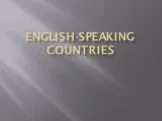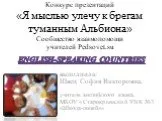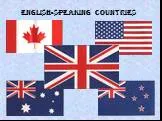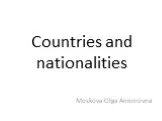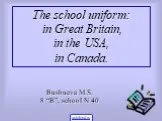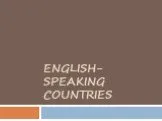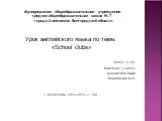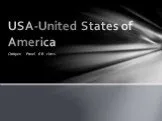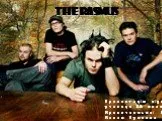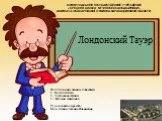Презентация "School uniform in different countries" – проект, доклад
Презентацию на тему "School uniform in different countries" можно скачать абсолютно бесплатно на нашем сайте. Предмет проекта: Иностранный язык. Красочные слайды и иллюстрации помогут вам заинтересовать своих одноклассников или аудиторию. Для просмотра содержимого воспользуйтесь плеером, или если вы хотите скачать доклад - нажмите на соответствующий текст под плеером. Презентация содержит 11 слайд(ов).
Слайды презентации
Список похожих презентаций
School Uniform
What is a uniform? According to Longman dictionary, a uniform is a type of clothing worm by all the members of an organization, or all the children ...Countries & Nationalities (Part 2)
What is his name? Where is he from? His name is Valery Meladze. He is from Georgia. He is Georgian. What is her name? Where is she from? Her name ...The english-speaking countries
Great Britain. USA. Disneyland. Australia. Scotland. ...School subjects
We learn a lot at school English History Geography Mathematics Physics Сhemistry Biology Ukrainian and literature. English is an international language. ...School life. Schoolwork. Grade 10
to be frustrated in to be nervous about to be cheerful to be excited about to be enthusiastic about to be delighted with to be bored with/of to be ...School Life in Britain
The School Uniform. School Ages. School Holidays. Term 1 - September to October (followed by a one week holiday) Term 2 - October to December (followed ...School days
Word snake. Schoolrupencilme bolschoolbaglmtbooktry rulerpanrarubberbokspencilcase. «Шпионы». Teacher: I spy with my little eye something beginning ...School and infomation technologies
Тема урока: Our school and information technologies. Английский язык. Modern technologies a mobile e - mail a computer HTML The Net a web address ...English-speaking countries
Canada. Ottawa-is the capital of Canada. The national flag of Canada. The USA. Washington is the capital of the USA. The national flag of the USA. ...English-speaking countries
English-speaking countries:. Great Britain USA Canada Australia New Zealand. Great Britain. The British Isles lie in the northwest of Europe. Two ...English speaking countries
Great Britain. Ireland. Ireland:. Northern Ireland The Irish Republic. Listening-Reading-Speaking-Test. WHAT IS IRELAND WASHED BY? THE ATLANTIC OCEAN ...Different Weird Types of Transportation (Странные транспортные средства)
hot air balloon. recumbent bike. monorail. Powersizers. rickshaw. gondola. monocycle. barge. Uni-cub. Zorb. Segway. tuk-tuk. ...Different subcultures
Informals -. People consisting of informal organizations, mostly youth, such as musical tastes punk, metal . They wear long black bangs, sometimes ...Different kinds of travellihg
Plan of the lesson:. new words & word combinations; doing the exercises; listening; adjectives describing travelling; comparison of adjectives & adverbs ...Countries and nationalities
- Where are you from? I’m from… What nationality are you? I’m …. North America South America Antarctica Africa Asia Europe Australia. The UK – London ...School
At the break to gain strength for the next lesson ... need all again, how is your lounge? Personally, I like). Here you can eat ...! Elegant hallway ...School
The question of whether children should wear a uniform to school always makes for a lively debate, and not only among students! In some countries ...English-speaking countries
English-speaking countries are: Great Britain, USA, Canada, Australia, New Zealand. The UK. The United Kingdom of Great Britain and Northern Ireland ...School clubs
Talking about school clubs Our school clubs invite you! [u:] drawing musician nature singing tennis photography Find the word with the sound:. [ʧ]. ...How different the world is
Plan. 1.Beginning 2. How tea was first drink in Britain? 3. Some facts 4. Tea-drinking 5. English breakfast 6. Making a Perfect cup of tea. 7. English ...Конспекты
Hobbies in different countries
Разработка собственного урока. Конспект открытого урока по английскому языку в 6 «В» классе. Учитель: Зенцов Сергей Геннадьевич. Тема урока: ...Is school the place where we learn different things?
1) МБОУ СОШ №61 имени М.И. Неделина. 2) Козлова Татьяна Эдуардовна. 3) Английский язык. 4) 7 «A. ». 5) Программно-методическое обеспечение: программа, ...Different Landscapes – Different Countries. What do you know about Britain?
Гайнуллина Эльвира Зиннуровна. Государственное бюджетное профессиональное образовательное учреждение «Альменевский аграрно-технологический техникум». ...Christmas celebrations in different countries
Конспект. . открытого. . урока. -. проекта. . по. . английскому. . языку. . “Christmas celebrations in different countries”. Дата:. 19.12.2012г. ...Different countries, different nationalities
Муниципальное бюджетное общеобразовательное учреждение. средняя общеобразовательная школа №70 г. Липецка. Конспект урока по английскому языку. ...Different landscapes – different countries
План. -. конспект. . урока. . в. 10. классе. . на. . тему. «Different landscapes – different countries». . Тип урока:. урок изучения нового ...Welcome to Green School
Конспект. урока английского языка. для 3 класса. «. Welcome to Green School. ». Unit 1. Welcome to Green School! . (c. 4-31). Lesson. ...The theme of the lesson: School things
Автор: Буланова Татьяна Владимировна. учитель английского языка. КГУ «Ганькинская неполная средняя школа». Северо-Казахстанская область, Республика ...School Life
«School Life». 4. класс. Тема. :. School Life. Тип урока:. комбинированный. . Цель урока. : закрепление лексических навыков по теме «. School. ...School Education
Урок английского языка в 7 классе по теме. "School Education". Урок в технологии проект. по УМК "Английский с удовольствием"\Enjoy English ...Советы как сделать хороший доклад презентации или проекта
- Постарайтесь вовлечь аудиторию в рассказ, настройте взаимодействие с аудиторией с помощью наводящих вопросов, игровой части, не бойтесь пошутить и искренне улыбнуться (где это уместно).
- Старайтесь объяснять слайд своими словами, добавлять дополнительные интересные факты, не нужно просто читать информацию со слайдов, ее аудитория может прочитать и сама.
- Не нужно перегружать слайды Вашего проекта текстовыми блоками, больше иллюстраций и минимум текста позволят лучше донести информацию и привлечь внимание. На слайде должна быть только ключевая информация, остальное лучше рассказать слушателям устно.
- Текст должен быть хорошо читаемым, иначе аудитория не сможет увидеть подаваемую информацию, будет сильно отвлекаться от рассказа, пытаясь хоть что-то разобрать, или вовсе утратит весь интерес. Для этого нужно правильно подобрать шрифт, учитывая, где и как будет происходить трансляция презентации, а также правильно подобрать сочетание фона и текста.
- Важно провести репетицию Вашего доклада, продумать, как Вы поздороваетесь с аудиторией, что скажете первым, как закончите презентацию. Все приходит с опытом.
- Правильно подберите наряд, т.к. одежда докладчика также играет большую роль в восприятии его выступления.
- Старайтесь говорить уверенно, плавно и связно.
- Старайтесь получить удовольствие от выступления, тогда Вы сможете быть более непринужденным и будете меньше волноваться.
Информация о презентации
Дата добавления:31 октября 2018
Категория:Иностранный язык
Содержит:11 слайд(ов)
Поделись с друзьями:
Скачать презентацию








